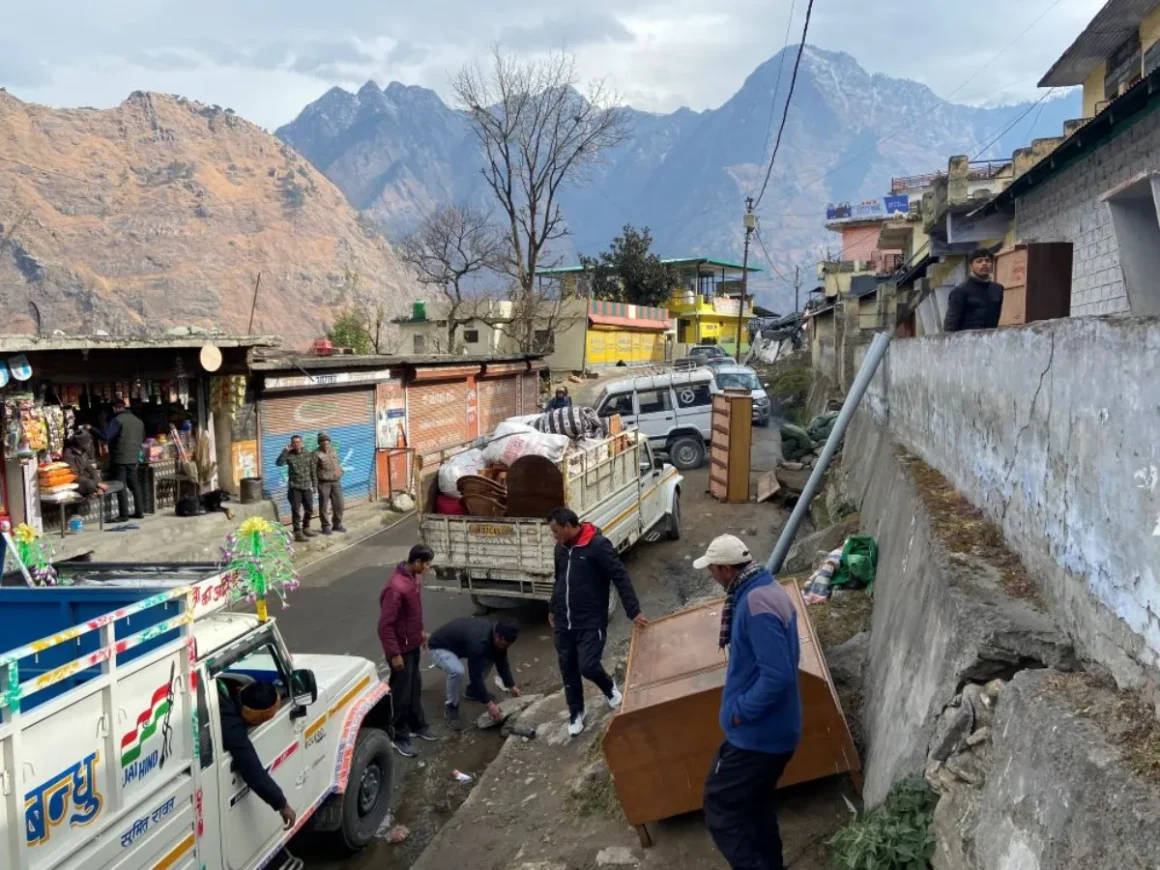
When glaciers retreat, rivers flood, and hills collapse — paradise itself stands on the brink.
On 2nd August 2025, the Supreme Court of India issued one of its harshest warnings: if reckless construction and climate inaction continue, “Himachal Pradesh may vanish into thin air.” This was not poetic exaggeration but judicial recognition that India’s fragile Himalayan belt is collapsing under the twin weight of climate change and unplanned development.
Recent data makes the picture even grimmer — over 1,800 landslides since June 2025 in Himachal and Uttarakhand, 108 deaths, and damages worth ₹1,952 crore. In Uttarkashi’s Dharali, flash floods on August 5 killed at least 5 people, leaving 50–100 missing. A week later, in Kashmir’s Chasoti, 60 lives were lost and more than 200 people went missing after massive landslides. This is not a one-off calamity but a Himalayan-wide breakdown.
Melting Glaciers, Collapsing Slopes, and Towns Sinking: Why the Himalayan Crisis is Escalating Faster Than Before
The Geological Survey of India (GSI) and the Indian Meteorological Department (IMD) confirm what locals already feel: the mountains are weakening. The Bara Shigri Glacier in Himachal has retreated 2 — 2.5 km in just a few decades, while two-thirds of Himalayan glaciers are shrinking.
Unscientific development adds fuel to the fire. Road-widening projects like the Char Dham Highway have triggered slope instability, while hotels and resorts in fragile valleys overload natural drainage systems. The Supreme Court Bench of Justice J.B. Pardiwala stressed: “Revenue cannot be earned at the cost of environment and ecology.”
Comparison with past years proves how urgent the situation is. In 2023, Uttarakhand reported around 1,100 landslides. By mid-August 2025, the toll had already crossed 1,800, making this one of the worst monsoon seasons in decades.
Dharali, Joshimath, Shimla, and Beyond: How Human Lives and Livelihoods Are Being Swept Away
In Dharali, locals said the Mandakini’s fury was like “waiting for death.” A villager from Mandi told a reporter: “Our orchard was swept away in one night. Every cloudburst now feels like the end of the world.”
- Joshimath has already started sinking — cracks in more than 1,000 homes forced mass evacuations last year.
- Shimla, once a tourist paradise, has seen over 500 houses collapse in rain since 2023.
- Nainital’s lake is slowly filling with debris from landslides, risking the town’s very identity.
What was once a faith and tourism hub is turning into a danger zone.
Why This Disaster is Happening Now: The Causes Behind the Headlines
According to the National Disaster Management Authority (NDMA) and GSI, three causes stand out:
- Climate change: Cloudbursts and extreme rainfall events have doubled in frequency over the past decade.
- Glacier retreat: Melting ice feeds rivers faster, overwhelming their channels.
- Reckless construction: Roads, dams, and hotels were approved despite warnings to destabilize fragile slopes.
The Supreme Court has repeatedly flagged these dangers, but most environmental clearance committees still allow mega projects to move forward, ignoring NDMA’s red lines.
What People Should Do: Precautions at the Local and Community Level
While governments debate policies, people in disaster-prone regions need practical safeguards. Experts from NDMA and IMD suggest:
- Avoid building homes on landslide-prone slopes.
- Store emergency kits: food, water, medicines, and torches.
- Stay alert to official weather warnings.
- Identify safe shelters in advance during the monsoon.
- Report slope cracks, unusual water flows, or sounds to local authorities immediately.
What Authorities Must Do for Long-Term Safety
The Himalayan belt will not survive on short-term fixes. The NDMA and the Supreme Court both recommend urgent systemic changes:
- Eco-sensitive zoning: Ban construction in high-risk areas.
- Early warning systems: Use radar, sensors, and satellites for predicting cloudbursts.
- Sustainable tourism rules: Cap visitor and vehicle loads in places like Kedarnath and Shimla.
- Community-led conservation: Train and empower locals to protect forests and slopes.
As climate scientists point out, this is not just India’s crisis — Nepal and Pakistan too are reporting deadly Himalayan cloudbursts. The entire mountain arc is becoming a danger zone, and India’s choices will set the tone for the region’s survival.
A Himalayan Wake-Up Call
The Supreme Court’s August 2025 warning is not just a judgment, but a survival alarm. The numbers — 1,800+ landslides, 100+ lives lost, billions in damages — are not abstract statistics but reminders that India’s mountains are in revolt.
If reckless construction continues, and if climate inaction remains the norm, the Himalayas will not just lose towns and temples — India will lose a part of its soul. The message from Dharali to Shimla, from JOshimath to Chasoti, is clear: act now, or prepare for erasure.
FOR MORE BLOGS – beyondthepunchlines.com

 Add to favorites
Add to favorites






